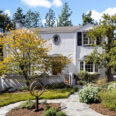
The Planning Commission will conduct a study session on a plan that establishes a bold new vision for North Lake Avenue. The North Lake Specific Plan outlines a bold new vision for the corridor. The plan aims to transform the bustling street into a vibrant, pedestrian-friendly corridor that better reflects the city’s neighborhoods.
A key part of the plan recommends sweeping changes to the area’s infrastructure, focusing on enhancing walkability, supporting local businesses, and improving environmental sustainability.
North Lake Avenue, which runs through the northern half of Pasadena, is often criticized for its auto-centric design. Unlike the more pedestrian-friendly South Lake Avenue, which has successfully attracted retail and commercial development, North Lake Avenue suffers from excessive space allocated to cars, making it less inviting for pedestrians and cyclists.
The City adopted a plan in 1997 to revitalize the area, but not much happened. The City then adopted a second plan in 2007, which had similar results. In 2018, work began on the current plan.
“To make this a great street, to make it a street people want to walk on, to want to come here to patronize local businesses we have to do something about the speeding volume of traffic, make this a pleasant environment,” said Planning Commissioner Rick Cole, in a video posted to his Instagram page.
The plan proposes a major redesign to create what city planners call a “Great Street” — a place for people to gather, shop, dine, and connect. “North Lake Avenue should be a destination, not just a thoroughfare. A walkable, attractive public space is key to a healthy, thriving community,” according to a staff report in Tuesday’s agenda.
The plan calls for the creation of a “complete street” that accommodates multiple modes of transportation, from transit and biking to walking. The updated design will also embrace “green street” principles, which aim to mitigate stormwater runoff and reduce the urban heat-island effect by increasing tree canopy and using water-conserving landscaping.
One of the central proposals is to prioritize pedestrians by narrowing vehicular lanes and removing the current shared vehicle/bicycle lanes. Instead, protected bike lanes will be installed, along with wider sidewalks, tree-lined medians, and improved crosswalks.
The City also plans to develop a comprehensive streetscape plan that integrates beautification efforts with environmental goals. The streetscape will include water-efficient landscaping, public art, benches, and street furniture, creating a welcoming environment for pedestrians. It will also ensure the street is clean and well-maintained, with an emphasis on safety and comfort.
To calm traffic, the plan proposes reduced speed limits, better traffic flow management, and the removal of the center turning lane. The goal is to make the street safer for pedestrians and cyclists while maintaining efficient access for drivers.
Public art would be woven into the streetscape, including murals and sculptures that celebrate Pasadena’s history and cultural diversity. This will help create a stronger sense of place and connection between the past, present, and future.
In line with the City’s commitment to sustainability, the plan calls for significant environmental upgrades, including the use of permeable paving, bio-swales, and drought-tolerant plantings. These changes are designed to reduce runoff, improve air quality, and provide cooling shade to the area.
The plan also calls for community engagement and collaboration with local stakeholders. A proposed economic study will assess the viability of mixed-use developments along the avenue, with a focus on housing, retail, and community-serving businesses. A new property-based business improvement district (P-BID) could provide funding for the plan’s implementation, while the city will also explore state and federal grants.
Key to the success of the plan is the coordination of city departments and local businesses. The city plans to designate a staff lead to oversee the project, ensuring that improvements are made efficiently and in line with community goals.



















